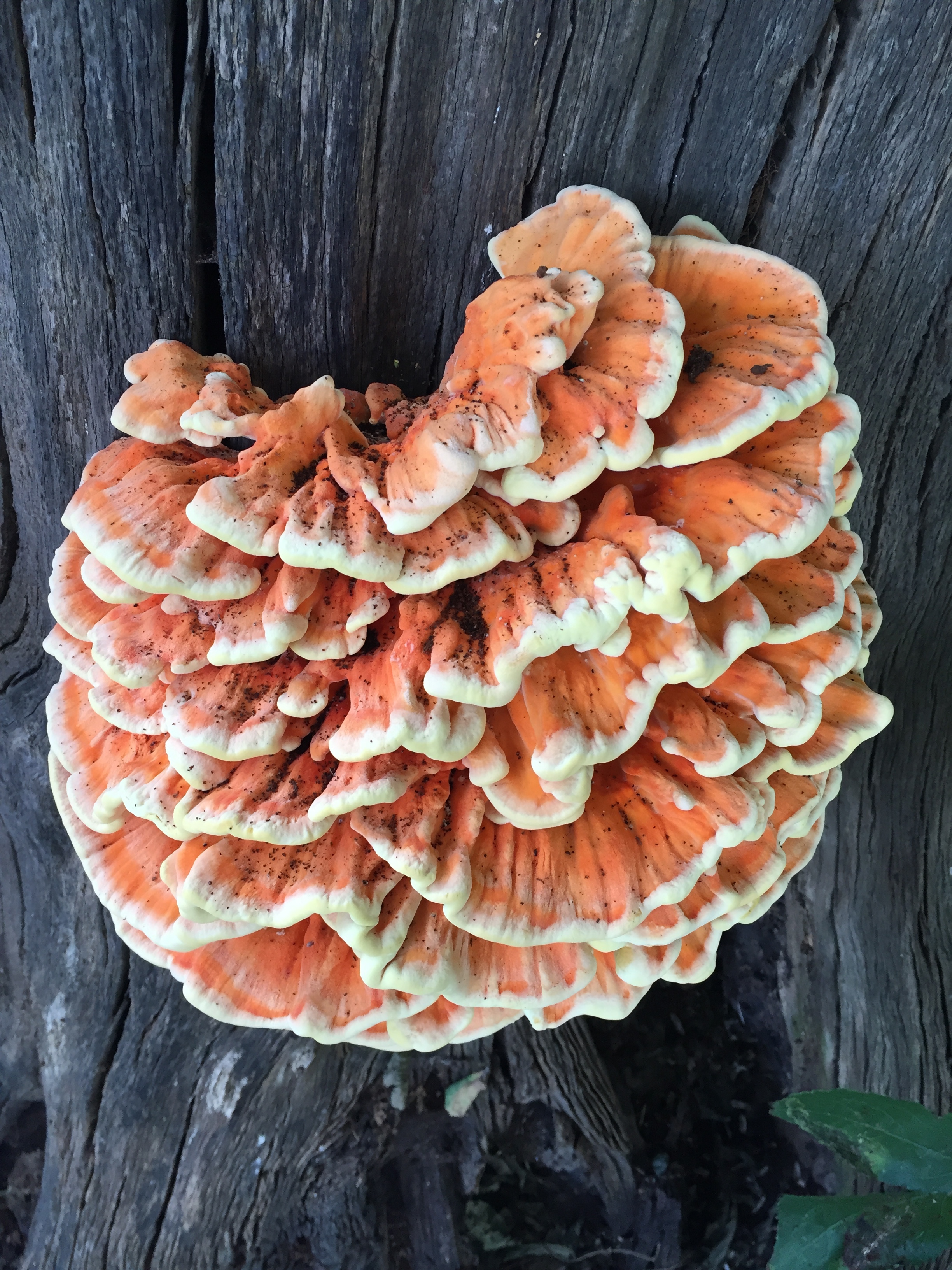For the first few seasons that I began mushroom hunting I didn't eat a single mushroom - because I was worried I would get it wrong and poison myself! So I started first by becoming familiar with the mushroom kingdom. Checking and re-checking my ID until I was 100% certain. Mushroom hunting can be a daunting hobby, especially to beginners, so it is wise to start with some very easy to identify species. Indeed there are many poisonous species out there so treat the hobby with respect!
Here are three wild mushroom species that we believe are good for the beginner forager as they are quite distinguishable. We have included basic identification features for each mushroom but make sure you get a good ID book (we love Roger Phillips – ‘Mushrooms’).
Mushrooms often give a deeply savoury, umami taste to dishes and make a great alternative to meat for vegetarians and vegans. They are a good source of protein, Vitamin D and immune boosting beta-glucans. Just in time for the winter cold in flu season…got to love the synergy of nature!
Just with any other kind of foraging, always only take what you need, leaving plenty of mushroom behind for wildlife to eat and for the fungus’ spores to spread and only consume when you are 100% certain of an ID.
Chicken of the Woods - Laetiporos sulphureas
Laetiporos sulphureas (Laetiporus comes from the Latin ‘a wealth of pores’, sulpureas meaning ‘bright yellow’). The beautiful sunrise yellow folds of the Chicken of the woods are hard to miss! What’s more, they often grow in vast swathes across an entire fallen tree. We’ve found up to 10kg on a single tree, and other reports have measured up to 300kg on a single tree! Making it a great mushroom to hunt for, even for those who don’t have 20/20 vision. Chicken of the woods, as the name suggests is by far the meatiest mushroom I have ever eaten. The flesh really does have the taste and texture of chicken. And unlike some mushrooms, it does not loose a lot of liquid when cooked, keeping its firm texture even when boiled.
Chickens tend to get tough and bitter with age so use them while young and fresh. A good way to tell if they are fresh is simply by looking at the colour, they tend to fade to a dull yellow/cream when old and the flesh when cut becomes fibrous. Some people have reported adverse effects with Chicken of the Woods including nausea and dizziness, while I have never found these effects it is best to boil a small amount and try it first before consuming a huge amount. In fact, some people recommend always boiling this mushroom before preparing it further. I boil mine in salted water for 5-10minutes, drain fully and then cube them and freeze for use in pies and curries (they really do make a great chicken substitute! Or I boil, drain and coat in breadcrumbs or a Kentucky-like batter before shallow frying. YUM.
Chicken of the Woods
Season: Early summer to late Autumn.
Habitat: Found on wood, mostly on Oak, Beech and Hornbeam. Best avoided if growing on non-deciduous trees as adverse effects have been noted. Chickens are thought to be quite toxic if found growing on Yew. Even more reason to learn your trees!
Fruiting body: up to 60cm across. Thick (meaty!), wavy fans of semi-circular or irregular yellow/orange flesh with a smooth , sued-like surface.
Pore Surface: Yellow with 2-4 circular to angular pores per mm; tubes to 5 mm deep.
Stem: Absent.
Harvest: Use a sharp knife to harvest to edges of the mushroom, leaving the ‘root’ on the wood intact. If harvested this way there may be a second growth later in the season.
Like many mushrooms, Chicken of the Woods has some great medicinal qualities here’s a great article on the subject https://ourcommonroots.com/robert-rogers-1/2016/4/19/chicken-of-the-woods-medicinal-mycology
Giant Puffball Calvatia gigantea syn. Langermannia gigantead
Ahhh the beautiful, elusive Giant Puffball. I have only had the pleasure of finding them twice in my mushroom hunting years but when they are found they are such a delight! The first time I found Giant Puffballs I hit the jackpot! There were 7 or 8 GIANT Pufballs growing in my local park all between 20-50cm in diameter. The second time it was just one, brain-sized mushroom. I never go out looking for them as they are so elusive but when you stumble across one it could turn out you find a while troop.
Always cut a Giant Puffball straight down the middle and check the flesh before eating. It should be white and firm throughout. If brown or dark coloured, the mushroom has gone to spore and its too old for eating. It should also be solid all the way through, if there are any signs of gills inside it could be the egg-stage of another mushroom, even a poisonous Amanita species. Not much else grows to the size of a giant Puffball though, if the mushroom is the size of a football, it is extremely unlikely to be anything else.
Giant puffballs have a similar texture and flavour to regular field mushrooms and they can be used in mush the same way. They do contain quite a bit of water so when cooking you may need to strain off any liquid (reserve for sauces!). Breaded, they make great mushroom goujons too.
Giant Puffball - Picture courtesy of Monica Wilde
Season: Late Summer to Autumn.
Habitat: Found in open grassy fields. They always grow on the ground, never on wood.
Fruiting Body: 10-80cm across and roundish in shape (the technical term is subglobose). When young, fresh and edible they are white/creamish in colour. Leathery outer wall breaking open to expose spore mass when mature. Attached to the earth by a root-like mycelial cord.
Harvest: Pull from the ground.
Porcini/Cep - Boletus edulus
The much sought-after chunky porcini is a member of the bolete family of mushrooms. These mushrooms all have one thing in common: while they look like a standard ‘mushroom’ they have pores instead of gills. Many species of bolete are edible, making them a great mushroom for beginners but do be aware that there are some very bitter tasting species of Bolete, some that can make you quite sick and even some extremely poisonous species. So get to know the family well and be particularly aware of any with a red pore surface like the possibly deadly Devil's Bolete.
You must pick Porcini mushrooms young when the spore surface is pale, when the age it becomes a yellowish green, and they are past their best and will likely be full of maggots.
Porcini mushrooms hold their shape and texture very well. They have a beautiful, deep ‘mushroomy’ flavour. They dry well and reconstitute well. So if you find a bumper crop, its well worth drying them out for use throughout the year for use in risottos, stews and sauces.
Porcini - Picture courtesy of Fabiolusword
Season: Early Summer – Autumn.
Habitat: Found in mixed and deciduous forests, often those containing Beech and Oaks.
Fruiting body: Typical ‘mushroom’ shape with stalk and cap. This member of the boletus family does not stain blue at all when bruised or cut (as many do).
Cap: Looks a bit like a crusty roll, slightly greasy looking or when dry they can be suede-like. The margin is usually a lighter colour than the rest of the cap. 7-30cm when mature.
Tubes and pores: When you slice or break off a piece of the mushroom, the tubes are a light yellow/cream/olive colour and come away easily from the cap. The pore surface is creamy-white. These do not bruise blue when cut.
Stem: Chunky and club-shaped 7-20cm tall. Creamy-beige in colour with a faint white net pattern (reticulum) usually visible. When cut the stem is white and solid.
Spore print: Olive brown
Harvest: Cut at the very base of the mushroom with a sharp knife, as mentioned before, often tiny maggots will get to them before you can. Discard any mushrooms that are badly infested. If just a few hollow ‘trails’ are seen, I often cut around these carefully and use the mushroom anyway. If any traces of maggots are seen be sure to remove them all and always cook them thoroughly. They can also be sliced thinly and dried in a dehydrator or a low oven.
Happy Hunting!
Vicky




